“BLACK LIVES MATTER!” is the primary chant being shouted by thousands of college students across the nation during a global pandemic and when social unrest is paramount. It is the year 2020, and the civil liberties of Black Student Activists are still challenged by law enforcement officers within American institutions of higher education. Unarmed Black Student Activists are using their bodies to expose the systemic inequities within these institutions of higher learning. As many of these students unite for racial justice, they are met with tear gas, tasers, and rubber bullets from law enforcement officers, regardless if they are peacefully protesting or not. From the outside looking in, higher education institutions are spaces where people from all social identities come together to gain knowledge and create a more just society free of racism, sexism, and other “isms” harming the lives of Black people (Ross, 2015). However, from the inside looking out – these institutions are quite the opposite, where Black students are considered inferior, and their lived experiences are meaningless. These beliefs are reinforced through “white supremacist capitalistic (cis-hetero) patriarchal systems, and institutional practices” (Dache, Quaye, Linder, & McGuire, 2019 p. 3; Dancy, Edwards, & Davis, 2018; hooks, 1990). These practices are cloaked in the First Amendment of the Constitution of the United States of America, which affords racist individuals the protection of exercising their freedom of speech along with faculty members’ right to academic freedom, without termination of employment as shown at Indiana University. Nevertheless, institutional leaders in positions of power, e.g., Board of Trustees, Presidents, Vice Presidents, Deans, and tenured faculty have taken advantage of these freedoms by disregarding the needs of Black Student Activists. Rather than using their positional power, coupled with white privilege to influence social change and ridding the campus of systemic racism, institutional leaders have remained complicit in maintaining white supremacy. These decisions have caused Black Student Activists to feel unsafe, silenced, and that their voices do not matter.
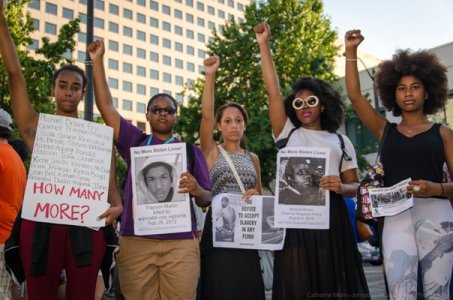 What is Systemic Racism?
What is Systemic Racism?
Collins (1998) defines systemic racism as “a system of unequal power and privilege in which human beings are divided into groups or races, with social rewards being unevenly distributed to groups based on their racial classification” (p. 280). On college campuses, systemic racism has benefitted white students, as shown in work examining racial equity gaps, admissions processes, and lack of culturally relevant curriculum and instruction in the classroom (Dache, Quaye, Linder, & McGuire, 2019). Additionally, there has been disproportionate disciplining due to targeting and bias towards Black Student Activists when engaging in collective action as a form of survival and fight for racial justice. Often called are Police officers to reprimand Black Student Activists during protests, rallies, strikes, marches, and sit-ins as shown at the University of Illinois at Urbana-Champaign in 1968 with Project 500, University of North Carolina - Chapel Hill in 2015 with Silent Sam Protests, University of Missouri in 2015 with #ConcernedStudent1950, and Syracuse University in 2019 to protest racist graffiti, just to name a few.
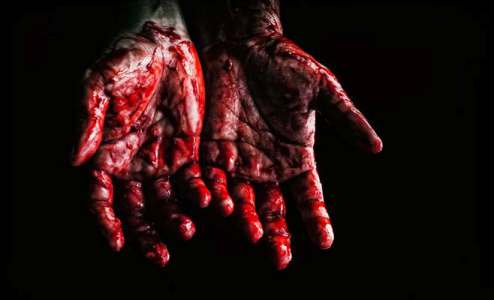 White Supremacy + Power Behind a Badge = Murder of Black Students
White Supremacy + Power Behind a Badge = Murder of Black Students
Black people have been murdered at the hand of police officers for years. In fact, in 1704, South Carolina created the first modern public police force, called “slave patrols.” The primary responsibility for the slave patrol was hunting down runaway slaves and returning them to their white owners (Reichel, 1992). Slaves were physically abused by these patrol officers when in their custody. When slavery was abolished in 1865 after the American Civil War, the use of patrollers was discontinued. However, slave patrols were replaced by vigilantes such as the Ku Klux Klan. This patrolling entity evolved, and their fundamental ideals of white supremacy manifested into what we know today as the police force (Reichel, 1992).
In 1970, a 19-year-old University of Kansas Black Student Activist named Rick “Tiger” Dowdell was shot in the back of the head by a member of the Lawrence Police Department in Lawrence, KS (Monhollon, 1997). An all-white jury exonerated the law enforcement officer responsible for his murder, and Black people on the campus and within the community were outraged (Monhollon, 1997). To this day, Black students are not satisfied with the outcome of this case and have submitted demands requesting that the investigation of this murder be reopened. However, no action has taken place.
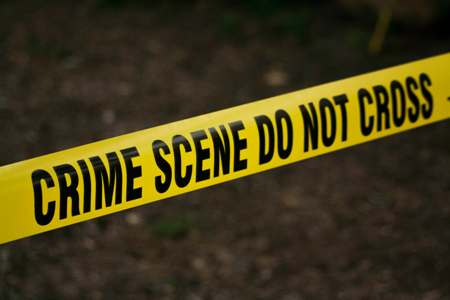 Racism and Terror by Police Departments
Racism and Terror by Police Departments
On May 26, 2020, the day after the brutal murder of George Floyd by the Minnesota Police Department, the University of Minnesota Student Body President and Black Student Activist, Jael Kerandi, submitted a letter of demands to her institution’s senior leadership. In her letter, she discussed how the Minneapolis Police Department has killed Black people at 13 times the rate of their white counterparts and also cited data from the Mapping Police Violence project. The Mapping Police Violence project provides evidence of police brutality against Black communities across the country. According to the data collected as part of this project, there were 1,099 people killed by the police in 2019 (Mapping Police Violence, 2020). Data showed that 99% of the police killings from 2013-2019 did not result in officers being charged with a crime (Mapping Police Violence, 2020). Student Body President, Karandi, demanded that the University of Minnesota Police Department discontinue all partnerships with the Minneapolis Police Department. The next day, the University’s President, Joan Gabel, released a statement, where she announced that the institution would no longer contract with the Minneapolis Police Department for large scaled events. President Gabel also announced that the institution would no longer work with the Minneapolis Police Department for specialized services such as K-9 Explosive detective units. The campus community, along with others external to the University were proud of this step taken. Subsequently, the Minneapolis Public School Board voted to terminate their contract with the Minneapolis Police Department after the killing of George Floyd. Currently, higher education institutions across the nation are being tasked by Black Activists to identify alternatives to campus policing.
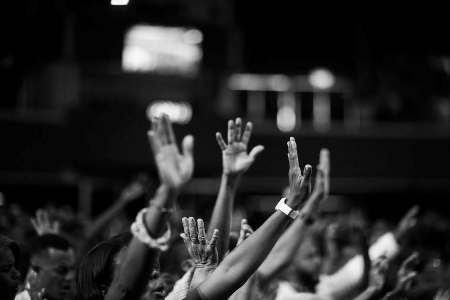 Alternatives to External Police Forces
Alternatives to External Police Forces
In a recent post on Facebook, Inc. where someone asked me, “What are the alternatives to policing?” in response to a post I made about the University of Minnesota’s discontinued partnership with the Minneapolis Police Department, I replied,
- Dismantle the institutionalized systems of oppression within higher education.
- Train staff personnel on how to respond to student incidents effectively, where their knee jerk reaction is not to immediately call the police.
- Encourage students to speak up when they see injustice.
- Require Colleges and Universities to develop culturally responsive mechanisms when incidents are being reported and processed.
- Listen to the voices of Black Student Activists and accept their demands for racial justice.
Please note that by doing these things, I am in no way suggesting that this is a panacea, and all of the current societal issues will be solved, particularly those involving the police. However, as more institutions of higher education divest from local police departments, this is a step in the right direction to better support students' physical and emotional needs, particularly Black Student Activists.
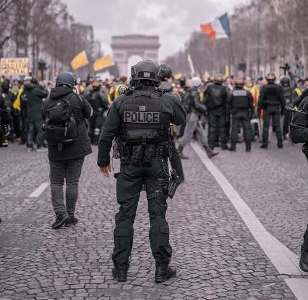 Can You Handle the Truth?
Can You Handle the Truth?
The truth of the matter is there’s still more to be done. This moment in society presents challenges for everyone, especially Black students who continue to remain on the margins of society, while individuals in positions of power are grappling with their racist ideologies. Law enforcement officers holding partnerships with college campuses are now being forced to confront the unjust systems and practices that they created, which terrorized Black students. This is not the time for white people in positions of power on college campuses to be silent. There is a revolution taking place, and it is now more critical than ever that Black people, white people, and those of color work together to deconstruct and rebuild the systems that harm those belonging to racially minoritized groups. This is the only way for us a community, particularly Black Student Activists to achieve racial justice on college campuses and society as a whole.
References
Collins, P. H. (1998). Fighting words: Black women and the search for justice. University of Minnesota Press.
Dache, A., Quaye, S. J., Linder, C., & McGuire, K. M. (Eds.). (2019). Rise up! Activism as education. Michigan State University Press.
Dancy, T. E., Edwards, K. T., & Earl Davis, J. (2018). Historically white universities and plantation politics: Anti-Blackness and higher education in the Black Lives Matter era. Urban Education, 53(2), 176-195.
hooks, b. (1992). Yearning: Race, gender, and cultural politics. South End Press.
Mapping Police Violence. (2020). Mapping Police Violence. https://mappingpoliceviolence.org
Monhollon, R. L. (1997). Black power, white fear: The ‘Negro problem in Lawrence, Kansas, 1960-1970. In J. J. Fossett (Ed.), Race consciousness: African-American studies for the new century (pp. 247-262). New York University Press.
Reichel, P. L. (1992). The misplaced emphasis on urbanization in police development. Policing and Society: An International Journal, 3(1), 1-12.
Ross, L. (2015). Blackballed: The Black and white politics of race on America's campuses. St. Martin’s Press.
Select Additional Resources from OCCRL
Podcast Episodes
- Advancing Racial Equity, Diversity, and Inclusion in Education
- Culturally Sustaining Practices on Race for a Better Campus Climate
- Implicit Bias and Policy Practices in Higher Education
- Racial Battle Fatigue
Blogs
- Activism through the lens of Mia Ives-Rublee
- Catching the Spark: Student Activism and Student Data as a Catalyst for Systemic Transformation
- Student Activism on Community College Campuses: Black Lives Mattering Then and Now
Videos
- Scholar Activism and Self-Care in an Era of #BlackLivesMatter
- Strategies and Resources to Address Race, Racism, and Move Toward Racial Justice
- Engaging in Difficult Dialogues about Race and Racism
Suggested Readings
- Cabrera, N. L. (2019). White guys on campus: Racism, white immunity, and the myth of “post-racial” higher education. Rutgers University Press.
- Conner, J. O. (2020). The New Student Activists: The rise of neoactivism on college campuses. Johns Hopkins University Press.
- DiAngelo, R. (2018). White fragility: Why it’s so hard to talk to white people about racism. Beacon Press.
- Morgan, D. L., & Davis III, C. H. (2019). Student activism, politics, and campus climate in higher education. Routledge.
- Saad, L. F. (2020). Me and white supremacy: Combat racism, change the world, and become a good ancestor. Sourcebooks.
This blog post is the third in OCCRL's "Truth Thursdays" series, which examines the impact of race, racial inequity, and calls for racial justice. Read the first blog "Truth Hurts" by Dr. Eboni M. Zamani-Gallaher and the second blog in the series by Dr. Marci Rockey, "Educational Governing Boards and Structural Racism."



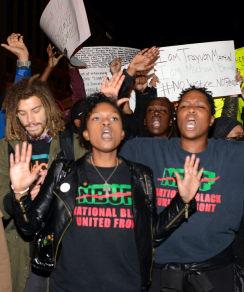
Leave a comment